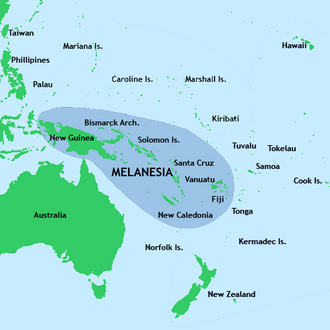 New Guinea located in relation to Melanesia and the South Pacific | |
 New Guinea Island | |
| Geography | |
|---|---|
| Location | Oceania (Melanesia) |
| Coordinates | 5°30′S141°00′E / 5.500°S 141.000°E |



US Naval Base New Guinea was number of United States Navy bases on the island of New Guinea (then divided into Dutch New Guinea, the Territory of New Guinea and the Territory of Papua) during World War II. Australia entered World War II on 3 September 1939, being a self-governing nation within the British Empire. The United States formally entered the war on 7 December 1941, following the attack on Pearl Harbor by the Empire of Japan. Following the attack on Pearl Harbor, Japan quickly took over much of the South Pacific Ocean. The United States lost key naval bases in the South Pacific, including Naval Base Manila and Naval Base Subic Bay, both lost in the 1941–42 invasion of the Philippines. Also lost were Naval Base Guam and Wake Atoll. As such, the United States Armed Forces needed new bases in the South West Pacific for staging attacks on Japan's southern empire. The United States built bases first in Australia, then in New Guinea. [1] [2] [3]






















